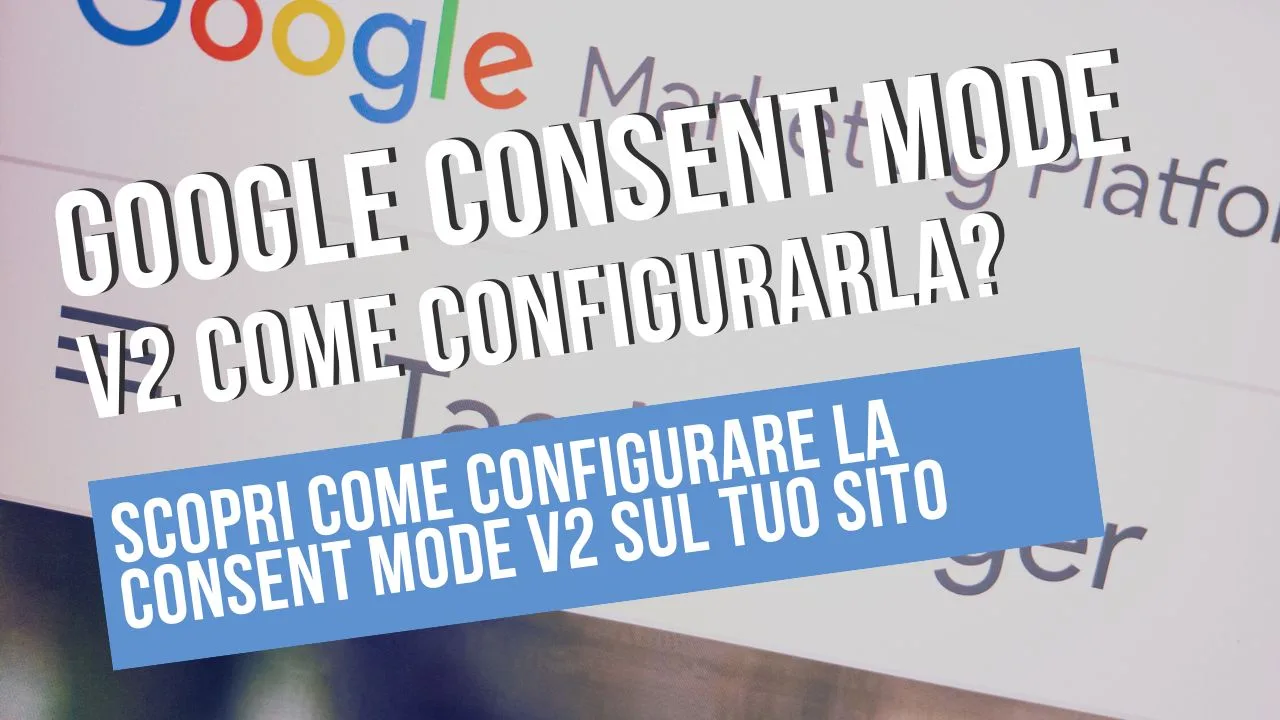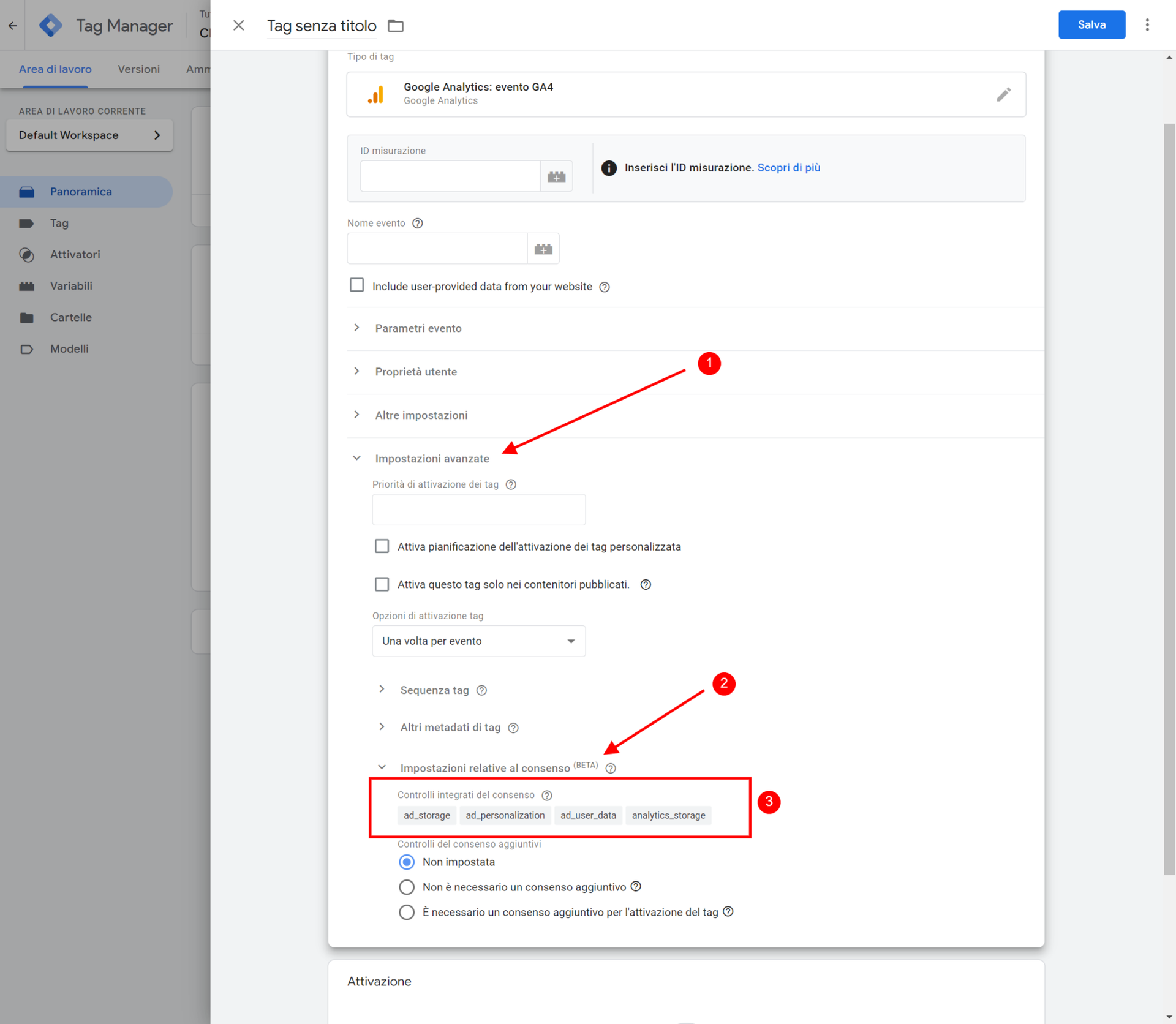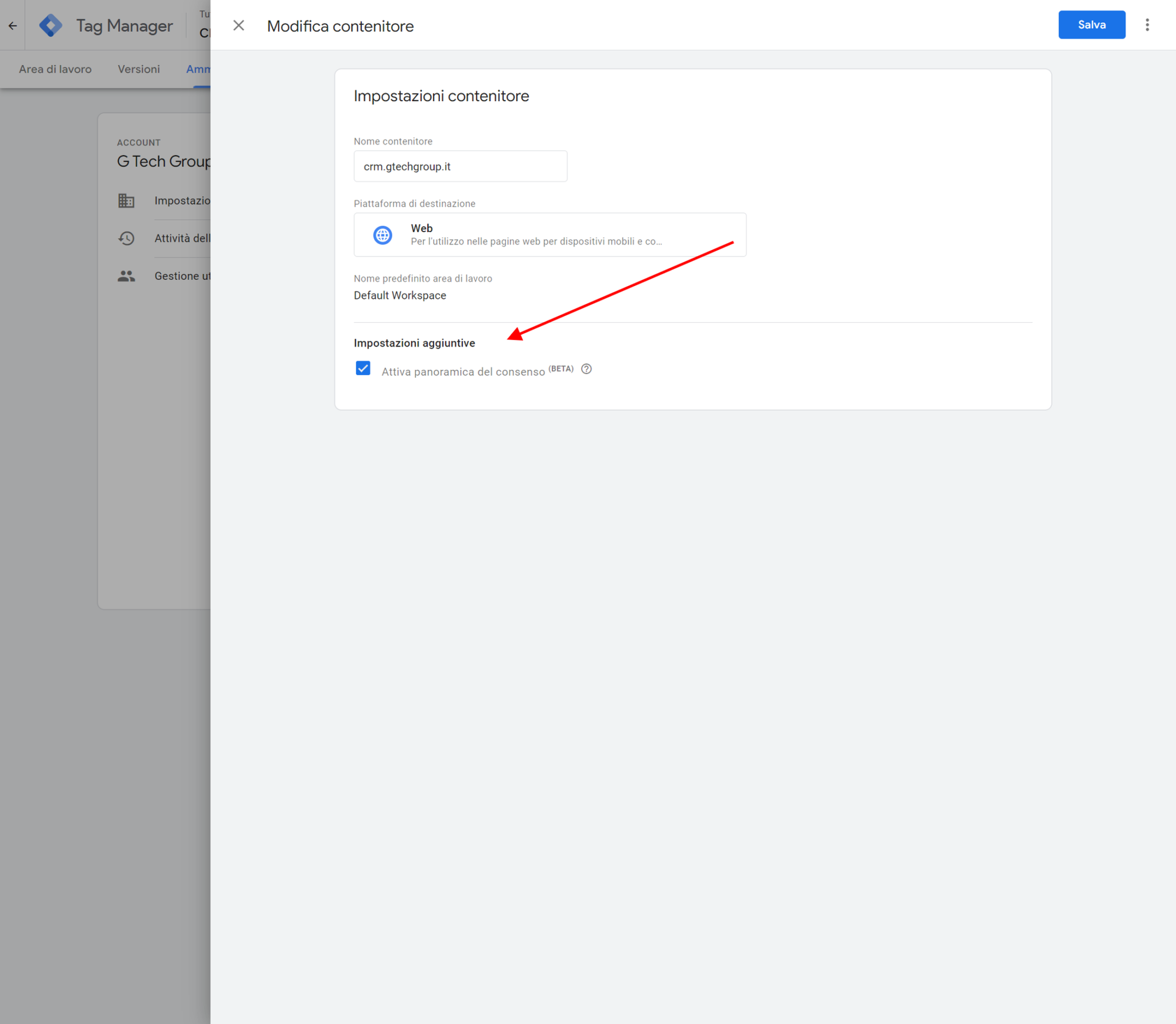In the vast universe of the web, the privacy of users is increasingly taking centre stage. Companies and developers are constantly looking for innovative solutions to ensure that online surfing is not only pleasant but also safe. It is in this context that Google introduces the Google Consent Mode V2a tangible response to the growing need for privacy and compliance with global regulations. But what exactly is it and how can it be implemented on websites? Let's find out together.
What is Google Consent Mode V2?
In a digital age where user privacy is at the centre of the global debate, Google Consent Mode V2 emerges as an innovative and revolutionary solution. This tool is designed to effectively address the growing concerns related to the online privacyoffering website owners a more flexible and compliant way to manage user consent. But let's find out in detail what this evolution means for the vast web ecosystem.
La Google Consent Mode V2 is at the forefront of online privacy management, allowing unprecedented customisation of the way Google services interact with website users. Thanks to this technology, site owners are able to adapt the operation of cookies and scripts based directly on the preferences expressed by users. This means being able to effectively balance the needs of site analysis and personalisation with users' privacy expectations.
The most innovative aspect of Google Consent Mode V2 lies in its ability to regulate the activation of certain functionalities, such as tracking scripts or cookies, only in the presence of explicit user consent. This approach user-centric not only reinforces users' trust in the site, but also allows site owners to continue collecting valuable data for traffic analysis and customisation of advertisements, all without ever losing sight of the importance of privacy.
Furthermore, the implementation of Google Consent Mode V2 is in line with stringent privacy regulations, such as the GDPR in Europe, offering website owners a powerful tool to ensure compliance with applicable laws. The adoption of this mode makes it possible to avoid sanctions and to build a relationship based on transparency and respect with users.
In summary, Google Consent Mode V2 is not just a technology; it is a statement of principles, a commitment to creating an Internet that respects and protects users' privacy. With this development, Google once again demonstrates its commitment to finding a balance between the commercial needs of websites and the fundamental rights of users, guiding the industry towards a more ethical and sustainable digital future.
Implementation through Reliable Services
In today's complex digital ecosystem, ensuring the privacy of users has become not only an ethical, but also a legal imperative. The implementation of Google Consent Mode V2 represents a crucial challenge for website owners, who must navigate complex privacy regulations while maintaining a smooth and personalised user experience. Fortunately, by working with trusted technology partners such as Cookiebot, Iubenda, OneTrust, They dare e Sourcepointthis challenge can be successfully met, ensuring compliance and respect for privacy without compromising the effectiveness of the site.
These services offer solutions turnkey for user consent management, dynamically adapting to changing regulations such as GDPR in Europe and CCPA in California. Through intuitive interfaces and automated processes, they make the integration of Google Consent Mode V2 not only possible but surprisingly smooth. This approach allows site owners to focus on their core business, delegating privacy management to specialised solutions that ensure maximum legal compliance.
The adoption of such tools goes beyond simple technical implementation; it represents an investment in trust and transparency towards users. By using these platforms, websites can clearly show how and why they collect data, improving the relationship with users through open and honest communication about privacy. This not only improves the reputation of the site but also contributes to a safer digital environment that respects individual rights.
Choosing the right partner for the implementation of Google Consent Mode V2 may vary according to specific site requirements, budget and personal preferences. Each provider offers a unique set of functionalities, from automatic generation of privacy policies to detailed management of consents for each type of cookie and tracking. Some stand out for their ease of integration with other analysis tools and marketingwhile others are preferred for their commitment to maximum customisation and customer support.
In conclusion, the decision to rely on established technology partners for the implementation of Google Consent Mode V2 is not only a strategic move to ensure regulatory compliance; it is a fundamental step towards building a lasting relationship of trust with users. By ensuring transparent and compliant consent management, these tools not only solve a technical complexity, but also pave the way for a digital future where privacy is considered an inalienable right, rather than an obstacle to be overcome.
Solution for WordPress Customers from G Tech Group
For site owners WordPress looking for an effective and cost-free solution to navigate the complex sea of privacy regulations, G Tech Group offers an avant-garde solution that combines efficiency and compliance: free integration of the Google Consent Mode V2 via Complianz. This approach not only meets compliance needs but also represents considerable added value for G Tech Group's customers, positioning it as an innovative leader in providing privacy-oriented digital solutions.
The installation of Complianz, a renowned consent and privacy management plugin on WordPress, marks a decisive step towards a safe navigation and legally compliant for websites. Through this strategic partnership, G Tech Group guarantees its customers a smooth and seamless implementation of Google Consent Mode V2, an innovation that allows WordPress sites to adapt Google services to users' consent preferences, thus improving the overall online experience without sacrificing customisation or traffic analysis.
This solution of G Tech Group stands out for several reasons. First, it removes the complexity and costs typically associated with compliance with privacy regulations, such as GDPR, by offering a comprehensive service that automates consent management. This frees website owners from technical and legal burdens, allowing them to focus on developing their business.
Moreover, offering this service free of charge reinforces the relationship of trust and loyalty with customers, demonstrating the G Tech Group's commitment not only to compliance but also to providing solutions that add real value to its customers' businesses. This commitment transforms compliance from a mere legal obligation into a competitive advantage, enhancing online reputation and strengthening end-user confidence.
Finally, this initiative underlines the importance of choosing technology partners that understand the challenges of today's digital landscape and are able to offer concrete, efficient and up-to-date solutions. G Tech Group's decision to provide free access to Google Consent Mode V2 via Complianz to its WordPress customers not only highlights its forward-looking vision but also sets a new standard of excellence in the industry, where respect for privacy becomes a fundamental pillar of digital development.
Google Tag Manager: The Universal Alternative
In a digital landscape where user privacy and compliance with global regulations have become paramount issues, not every website can make use of the specifically mentioned solutions or perhaps run a WordPress-based infrastructure. This is where a powerful universal tool comes into play: Google Tag Manager (GTM). This solution is a wildcard in online privacy management, offering unprecedented flexibility and accessibility for the integration of the Google Consent Mode V2 and beyond.
Google Tag Manager stands out for its ability to simplify the management of site tags, which are essential for conversion tracking, traffic analysis, marketing optimisation and much more. Its versatility lies in allowing website owners to add, modify or remove any type of tag without the need to intervene directly in the site's source code, thus facilitating operations that would otherwise require advanced technical skills and significant resources.
The reality is that implementing privacy measures such as Google Consent Mode V2 may seem a daunting task, especially for those sites that do not rely on pre-packaged solutions or specific platforms CMS such as WordPress. GTM solves this challenge by offering a single platform to manage all aspects of tags and user consents in a centralised and automated manner. With GTM, even customised sites or sites built on less popular content management systems can easily comply with privacy regulations, improving transparency and user trust.
In addition, Google Tag Manager facilitates the implementation of a consent strategy that both complies with applicable laws and respects user preferences. With GTM, tags can be configured so that they are only activated after the user has given consent, thus ensuring that data collection takes place in an ethical and legal manner. This not only helps navigate the complex landscape of global privacy regulations, but also raises the standard of respect for the end user, cementing the website's reputation as a privacy-friendly entity.
The use of Google Tag Manager thus represents not only a strategic choice for technical implementation but also an investment in digital ethics, demonstrating a commitment to building a more secure and transparent online ecosystem. Through the use of GTM as an alternative solution for the integration of Google Consent Mode V2, site owners have a powerful tool that supports them in being proactive in protecting user privacy, regardless of the platform on which they operate.
How to configure Google Consent mode V2 with Tag Manager, step-by-step guide.
We have created a small video showing where these settings are in the tag manager
Towards a Future of Privacy and Compliance: The Key Role of Google Consent Mode V2
In today's digital landscape, where online privacy is becoming increasingly important, innovative tools such as the Google Consent Mode V2 emerge as indispensable allies for website owners. This technology not only facilitates compliance with privacy regulations but also sets a new standard for the balance between site owners' need to understand user behaviour and the users' fundamental right to privacy. Thanks to the engagement of trusted third-party services and the pioneering approach of pioneering companies such as G Tech Groupthe adoption of these advanced solutions becomes not only feasible but also extremely advantageous.
The growing emphasis on user privacy has prompted the evolution of complex regulations such as GDPR in Europe, making it imperative for website owners to stay abreast of the legal requirements constantly changing. In this context, the Google Consent Mode V2 acts as a bridge between the need to collect analytical data to optimise marketing strategies and the imperative to protect user privacy. This is made possible by its ability to dynamically adapt data collection according to the consents expressed by users, thus ensuring respectful and personalised navigation.
The adoption of tools such as the Google Consent Mode V2together with the support of platforms such as Cookiebot, Iubenda, OneTrust, They dare, e Sourcepointoffers site owners a range of options to effectively manage user consent. This represents a fundamental step towards demystifying privacy regulations and their practical application in the digital world. G Tech Group stands out in this landscape, offering free implementation of the Google Consent Mode V2 to its customers using WordPress, demonstrating a proactive commitment to the promotion of a privacy-centred digital culture.
In conclusion, the key to successfully navigating the digital future lies in the ability to embrace technology and innovation to ensure secure online experiences that meet users' privacy expectations. With the availability of advanced tools and the assistance of industry experts, keeping one's online presence in line with the latest privacy regulations is not only possible but becomes an opportunity to strengthen users' trust and loyalty. In tomorrow's digital world, respect for user privacy will be a fundamental pillar on which to build online success.










